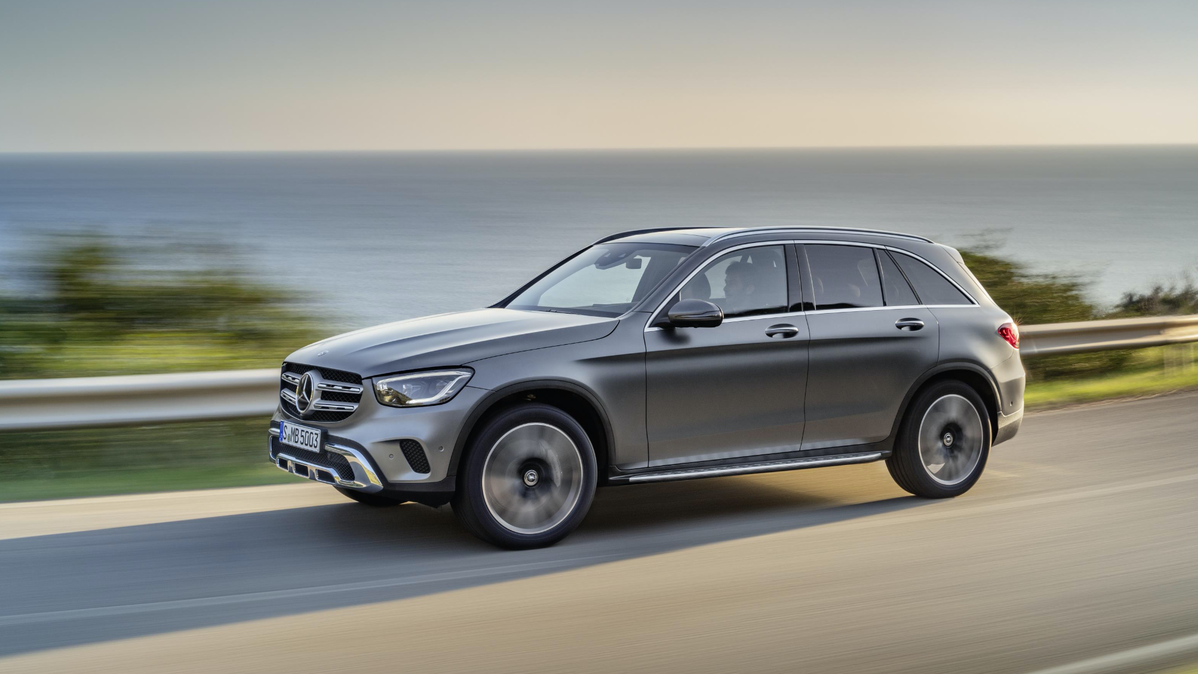Welcome new tech for Mercedes’ best-selling SUV, the GLC
A test drive of the SUV mid-life update reveals it's gained in many areas, and lost in only a few.

Time spent at the wheel of the newly revised Mercedes-Benz GLC SUV is an opportunity to appreciate many things, the most obvious being the breadth of functionality of its new MBUX (Mercedes-Benz User Experience) infotainment system.
The MBUX system isn’t exclusive to the GLC range, and this iteration isn’t even the latest version available as it rapidly rolls out across the German car-maker’s entire fleet. But this mid-cycle update of Mercedes’ most popular SUV provided an opportunity to experience one of the most sophisticated infotainment systems on the market.
It’s not without its foibles. Casual conversation in the cabin can rapidly descend into farce, thanks to the trigger-happy voice-activated digital assistant, Mercedes, who is quick to recognise her own name when it’s spoken and proffer assistance. On the recent launch drive in Victoria’s stunning Upper Goulburn region, my companion and I were interrupted so often that it became a standing joke to see how long we could go between interjections.
Eager to please
To be fair, few people will utter the word “Mercedes” on a road trip quite as often as a couple of motoring writers on a Mercedes-Benz launch; but the frequent interventions did at least highlight how quickly and clearly the system responds to voice commands, and how eager it is to assist with the dozens of commonly used vehicle systems it’s able to control.
In addition to voice control, small finger pad controls on the steering wheel allow the driver to toggle through two colourful displays on a pair of crystal-clear digital screens, one ahead of the driver (12.3-inch) and the other a central touchscreen (10.25-inch). It’s not the outstanding fully integrated display system found on the newer A-Class hatchback, due to the GLC being midway through its life cycle, but it’s nonetheless impressive in both looks and functionality.
A touch-pad on the centre console replaces a rotary dial, meaning that drivers have multiple ways to navigate the car’s computerised sub-menus. Once MBUX gets to know you a little better, it will use artificial intelligence to proactively offer suggestions on frequently used features such as satnav, digital radio settings and smartphone mirroring.
No more diesel
While tech-geeks will love the updated GLC range, fans of compression ignition will be disappointed to discover there are no longer any diesel engines available. In a sign of what’s to come from many European car makers, Benz has dropped the previous-generation GLC 250d and GLC 350d from both its SUV and coupe body styles, replacing them with a plug-in hybrid and two revised turbo-petrol powerplants.
Only the updated GLC 200 and GLC 300 turbo-petrol four-cylinder models were available to sample at launch, both now spruiking more power and torque than the GLC 200 and GLC 250 they replace: the new GLC 200 adds 10kW and 20Nm over the outgoing model, while the GLC 300 (formerly GLC 250) is up 35kW and 20Nm.
Other new GLC models coming down the pipeline include the Mercedes-AMG GLC 43 and GLC 63S, a plug-in hybrid GLC 300 e 4MATIC, as well as three coupe body styles, equipped with the 300 and AMG powertrains.
When complete by the second quarter of next year the full range will stretch to eight models, ranging in price from the sole rear-wheel-drive model, the GLC 200 at $66,100 (plus on-road costs), to the range-topping AMG C63 S 4MATIC+ Coupe at $168,100.
Getting the ride right
All GLCs feature revised exterior styling and the new MBUX system, while the repowered GLC 200 and 300 can now be optioned with adaptive air spring suspension ($3800), previously only available on the GLC Coupes. There’s also a mid-tier suspension utilising steel springs with electronically adjustable dampers ($1900), plus the standard steel-sprung and hydraulically-damped versions as fitted to the GLCs we drove at launch.
Some commentary about the standard suspension on the previous range suggested it was overly brittle. However, our run north-east from Melbourne via an entertaining selection of lumpy backroads and some gravel indicated this issue has been significantly mitigated, if not eradicated altogether.
Both the GLC 200 on 19-inch wheels and the GLC 300 on 20s wafted along with an impressive degree of hushed civility and compliance, although sharp ridgelines could still catch them out on occasions, sending a disconcerting wallop through the otherwise extremely comfortable and handsomely finished interiors.
The sweet spot
Having first sampled the adequate 145kW/320Nm rear-wheel-drive GLC 200, I found the extra oomph of the $77,100 GLC 300 4MATIC (190kW/370Nm) more to my liking.
It’s the same 2.0-litre direct-injection and turbocharged four-cylinder engine in both, but with its extra 45kW and 50Nm the 300 is noticeably lustier, its tacho zinging across the dial with real relish. Driving through an efficient nine-speed automatic and with plenty of turbo-typical mid-range torque, it shifts the GLC’s circa 1800kg kerb weight with ease.
While the base GLC 200 comes loaded with a lengthy list of standard kit, the GLC 300 adds all-wheel drive and 20-inch wheels, along with keyless go, wireless phone charging, fancier multi-beam LED headlights (with adaptive high beam), running boards, rear privacy glass and a Driver Assistance Package.
The latter includes a bundle of active safety features including active cruise control, active steering, active braking with cross-traffic function, blind spot assist, lane keep assist, and lane change assist. With all these semi-autonomous systems enabled, the GLC can pretty much drive itself – and will do so for short periods, before prompting you to get your mitts back on the wheel.
With ‘Mercedes’ proving so adept at serving up whatever you need, it can surely only be a matter of time before GLC owners can ask, “Hey Mercedes, can you take the wheel?”.





Hi Guest, join in the discussion on Welcome new tech for Mercedes’ best-selling SUV, the GLC